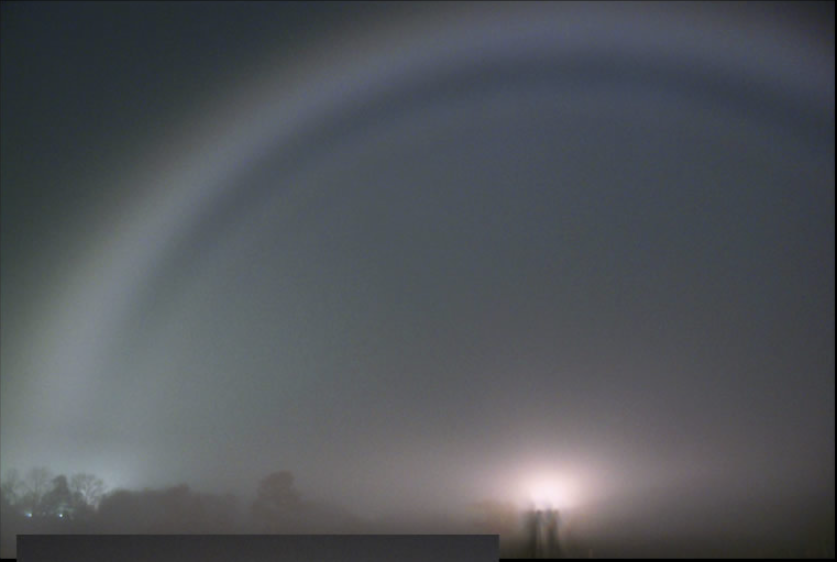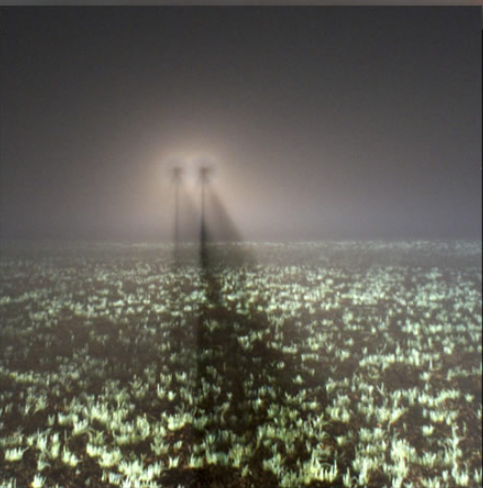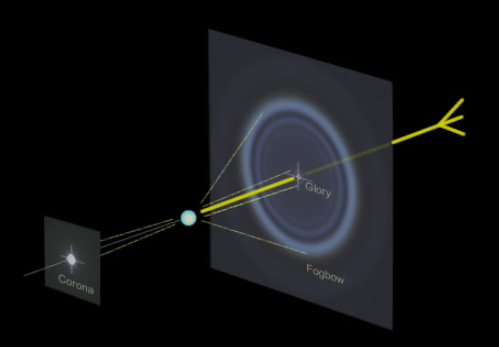DIY Fogbow
DIY Fogbow: Capturing the Ethereal Beauty of Atmospheric Optics
Have you ever witnessed a foggy evening when the air is thick with moisture, creating a mysterious ambiance? In such moments, nature often reveals its hidden wonders, such as the mesmerizing phenomenon known as a fogbow. A fogbow is a captivating optical display that occurs when sunlight interacts with water droplets suspended in fog. While fogbows may not be as commonly observed as rainbows, they possess their own unique charm. In this article, we will delve into the fascinating world of fogbows and explore how you can capture their ethereal beauty through a do-it-yourself (DIY) approach.
Unveiling the DIY Fogbow
One individual who successfully captured the enchantment of a fogbow is Jonathon Stone from Baileyton, Alabama. On a day when the fog had persisted throughout, Jonathon decided to embark on an experiment to witness and photograph a fogbow. As nightfall arrived, the fog grew denser, creating the perfect conditions for his endeavor. Armed with his camera and a creative idea, Jonathon used his car's headlamps as a light source for the fogbow. Standing approximately 120 feet away from the headlamps, he aimed his camera in the opposite direction.
The Enigmatic Colors of a Fogbow
As Jonathon's camera clicked away, it captured the mesmerizing sight of a fogbow adorned with traces of color. The outer edge of the main bow displayed a beautiful red hue, while the first supernumerary inside the bow exhibited reversed colors. This interplay of colors adds to the allure of fogbows, making them a captivating sight for both casual observers and avid photographers.
Unraveling the Secrets of Atmospheric Optics
The enchanting glow at the center of the fogbow is caused by light backscattered as a glory. A glory is an optical phenomenon that occurs when sunlight interacts with tiny water droplets or ice crystals in the atmosphere. This interaction causes the light to scatter and form a luminous ring around the observer's shadow. In Jonathon's case, the two headlamps he used each produced their own glory, enhancing the ethereal nature of his photographs. Additionally, the camera tripod's shadow created a captivating "Brocken Spectre" effect, further amplifying the mystique of the scene.
Crafting Your Own DIY Fogbow Experience
Now that you have been introduced to the captivating world of fogbows, you may be inspired to embark on your own DIY fogbow adventure. Here are some steps to help you get started:
-
Find a suitable location: Look for a foggy area with minimal light pollution to enhance the visibility of the fogbow.
-
Choose a light source: Select a powerful light source, such as a car's headlamps or a high-intensity flashlight, to illuminate the fogbow.
-
Position yourself and your camera: Stand at a suitable distance from the light source and ensure that your camera is aimed in the opposite direction. Experiment with different angles and compositions to capture the best possible shot.
-
Patience is key: As with many natural phenomena, fogbows may take time to appear or may only be visible for short durations. Be patient and persistent in your pursuit.
-
Explore post-processing techniques: Once you have captured your fogbow photographs, experiment with post-processing techniques to enhance their visual impact. Adjusting the contrast, saturation, and sharpness can help bring out the intricate details of the fogbow.
Remember, capturing a fogbow requires a combination of luck, timing, and skill. Embrace the serendipity of nature's wonders and enjoy the process of discovering the hidden beauty that lies within foggy landscapes.
In conclusion, fogbows offer a captivating glimpse into the world of atmospheric optics. By harnessing the power of DIY techniques, you can embark on your own fogbow adventure and capture the ethereal beauty of these elusive phenomena. So, grab your camera, find a foggy location, and let nature's enchantment unfold before your lens. Happy fogbow hunting!

Car Headlamp Fogbow made by Jonathon Stone, Baileyton, Alabama on December 18. ©Jonathon Stone, shown with permission.
"The fog was thin all day... After the sun had set it began to get very thick... It was still very thick when I decided to try the fogbow."
Jon used his car headlamps as a light source. He stood about 120 ft distant with the camera pointing in the direction away from the headlamps.
The main fogbow shows traces of colour with red on the outside. The first supernumerary inside the main bow has reversed colours.
The bright glow at the bow centre is light backscattered as a glory.
The two headlamps each produced their own glory and "Brocken Spectre" of the camera tripod shadow.


Note: this article has been automatically converted from the old site and may not appear as intended. You can find the original article here.
Reference Atmospheric Optics
If you use any of the definitions, information, or data presented on Atmospheric Optics, please copy the link or reference below to properly credit us as the reference source. Thank you!
-
<a href="https://atoptics.co.uk/blog/diy-fogbow/">DIY Fogbow</a>
-
"DIY Fogbow". Atmospheric Optics. Accessed on December 25, 2024. https://atoptics.co.uk/blog/diy-fogbow/.
-
"DIY Fogbow". Atmospheric Optics, https://atoptics.co.uk/blog/diy-fogbow/. Accessed 25 December, 2024
-
DIY Fogbow. Atmospheric Optics. Retrieved from https://atoptics.co.uk/blog/diy-fogbow/.